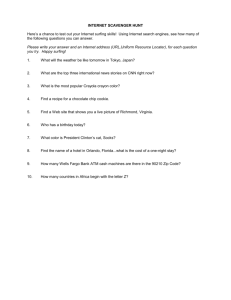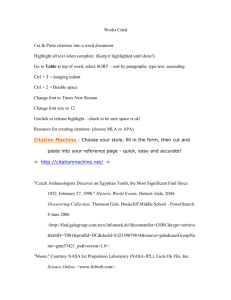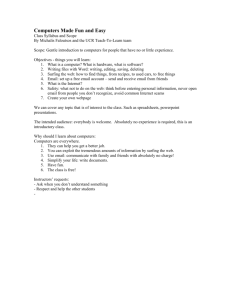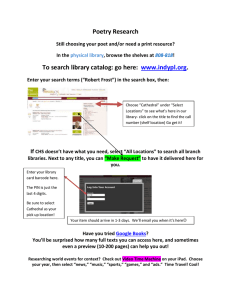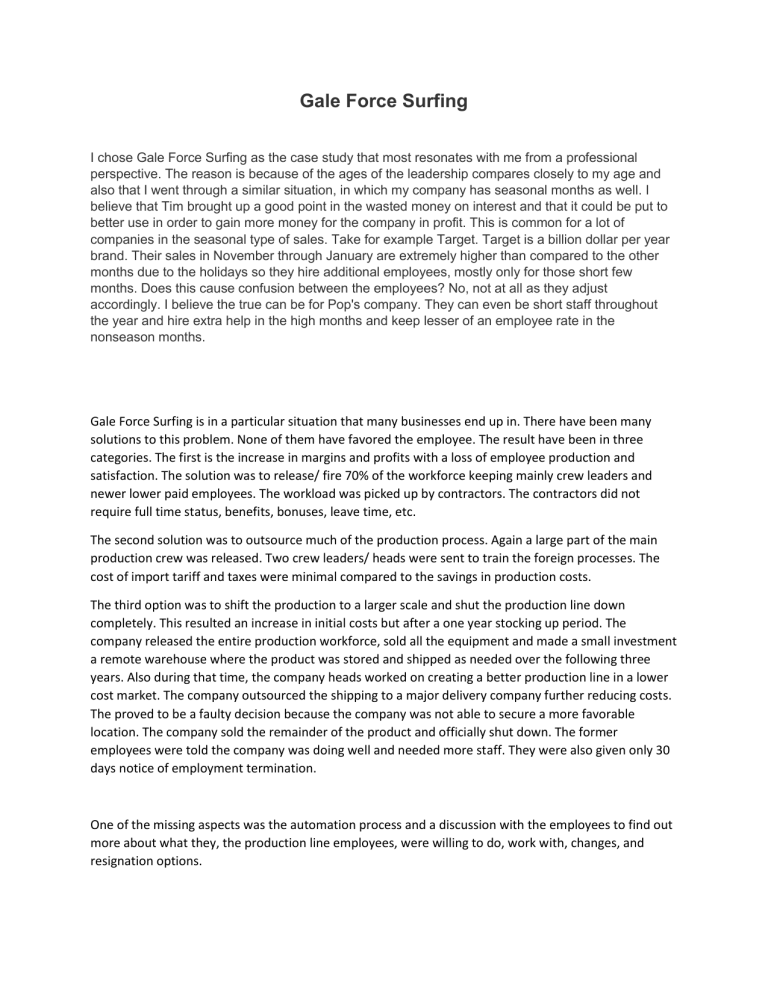
Gale Force Surfing I chose Gale Force Surfing as the case study that most resonates with me from a professional perspective. The reason is because of the ages of the leadership compares closely to my age and also that I went through a similar situation, in which my company has seasonal months as well. I believe that Tim brought up a good point in the wasted money on interest and that it could be put to better use in order to gain more money for the company in profit. This is common for a lot of companies in the seasonal type of sales. Take for example Target. Target is a billion dollar per year brand. Their sales in November through January are extremely higher than compared to the other months due to the holidays so they hire additional employees, mostly only for those short few months. Does this cause confusion between the employees? No, not at all as they adjust accordingly. I believe the true can be for Pop's company. They can even be short staff throughout the year and hire extra help in the high months and keep lesser of an employee rate in the nonseason months. Gale Force Surfing is in a particular situation that many businesses end up in. There have been many solutions to this problem. None of them have favored the employee. The result have been in three categories. The first is the increase in margins and profits with a loss of employee production and satisfaction. The solution was to release/ fire 70% of the workforce keeping mainly crew leaders and newer lower paid employees. The workload was picked up by contractors. The contractors did not require full time status, benefits, bonuses, leave time, etc. The second solution was to outsource much of the production process. Again a large part of the main production crew was released. Two crew leaders/ heads were sent to train the foreign processes. The cost of import tariff and taxes were minimal compared to the savings in production costs. The third option was to shift the production to a larger scale and shut the production line down completely. This resulted an increase in initial costs but after a one year stocking up period. The company released the entire production workforce, sold all the equipment and made a small investment a remote warehouse where the product was stored and shipped as needed over the following three years. Also during that time, the company heads worked on creating a better production line in a lower cost market. The company outsourced the shipping to a major delivery company further reducing costs. The proved to be a faulty decision because the company was not able to secure a more favorable location. The company sold the remainder of the product and officially shut down. The former employees were told the company was doing well and needed more staff. They were also given only 30 days notice of employment termination. One of the missing aspects was the automation process and a discussion with the employees to find out more about what they, the production line employees, were willing to do, work with, changes, and resignation options.
